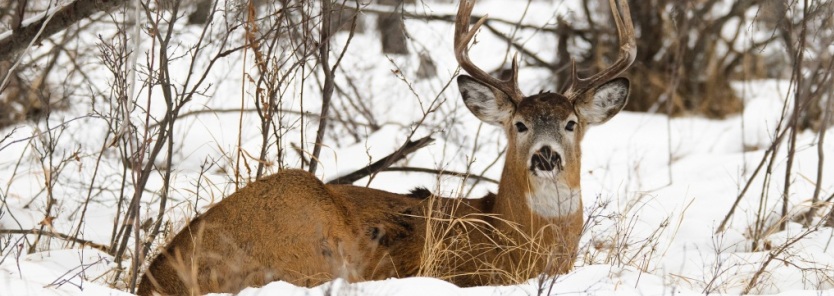To know which late season hunting tactics will serve you best you need to know the “status” of the herd. Everything will hinge upon temperatures, if you have snow and whether or not there are does left that have yet to be successfully bred. Frequently there are does that aren’t bred or didn’t effectively conceive during the main rut. If they haven’t been bred successfully, they will come into heat 28 days later. And if “it” doesn’t happen that time they’ll come into estrus again 28 days after that. And under thriving conditions it is also possible for first year doe-fawns to come into heat their first time – this may happen anytime from December through February and occurs most often in areas where conditions are good and they have ample nutrition.
Secondary Rut
If there are does left that haven’t conceived yet, it can lead to what some call the “secondary rut.” If you have this playing out in your area you’ll still see a lot of sign or you’ll notice a lot more activity on your trail cameras. When you’re dealt with this scenario you’re better off using the same tactics that would be common during the peak of the rut. Competition tactics like aggressive calling and rattling, or breeding strategies like a scent trail of Special Golden Estrus should still produce.
Post Rut Tactics
In areas that have a well-balanced herd, most of the breeding will have been completed during the primary rut (through most of the continent during November). In this case, they may start to go into “winter survival mode.” In fact, even if there is some breeding left to be done if you receive severe cold temperatures or get a lot of snow they can fall into this survival routine. If this is the case they may simply find an area nearby that suits their needs, or they may move miles away into winter yards with thermal cover, browse and an additional wintertime food source. Once they start their winter patterns they’ll move much less. Even if they have ample food nearby, instincts tell them when the weather is bad they may not intake enough energy to offset what they are burning so they simply stay bedded.
If they’re in this survival mode you’re best to hunt the major food sources. Corn and brassicas like Deer Radish, Maximum and Winter Bulbs & Sugar Beets are favorite food sources for a late season ambush. Plant these in your late season hunting plots and you’ll have it covered.
~
Tech Tip from OutdoorMetrix
Using a tool like OutdoorMetrix can help you experience late season success. As you move your trail cameras around and zero in on deer activity, you can see weather details for every trail cam image. Logging the number of deer seen on every hunt, noting deer behavior, and analyzing your hunt results against corresponding location and weather conditions can help you “tune in” to what the deer are doing.









